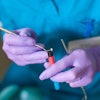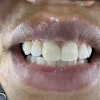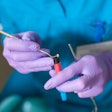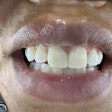The clinical behavior of Scotchbond Universal adhesive (3M ESPE) does not depend on the bonding strategy, according to study that evaluated the product six months after it was used in the restoration of noncarious cervical lesions (Journal of Esthetic and Restorative Dentistry, November 15, 2012).
There is a need for more clinical data to support the use of new multimode adhesives such as Scotchbond, according to the study authors, from Universidade Estadual de Ponta Grossa and the University of Minnesota.
They assessed 39 patients and a total of 200 restorations. The restorations were assigned to four groups: SU-TEm: etch-and-rinse + moist dentin; SU-TEd: etch-and-rinse + dry dentin; SU-SEet: selective enamel etching; and SU-SE: self-etch. The composite resin Filtek Supreme Ultra (3M ESPE) was placed incrementally, and the restorations were evaluated at baseline and after six months using both the World Dental Federation and the United States Public Health Service criteria.
Only four restorations (SU-SE: 3 and SU-TEm: 1) were lost after six months (p > 0.05 for either criteria). Marginal discoloration occurred in one restoration in the SU-SE group (p > 0.05 for either criteria).
At six months, the clinical behavior of the new multimode adhesive Scotchbond Universal was found to be reliable when used in noncarious cervical lesions and may not depend on the bonding strategy employed, the study authors concluded.



















